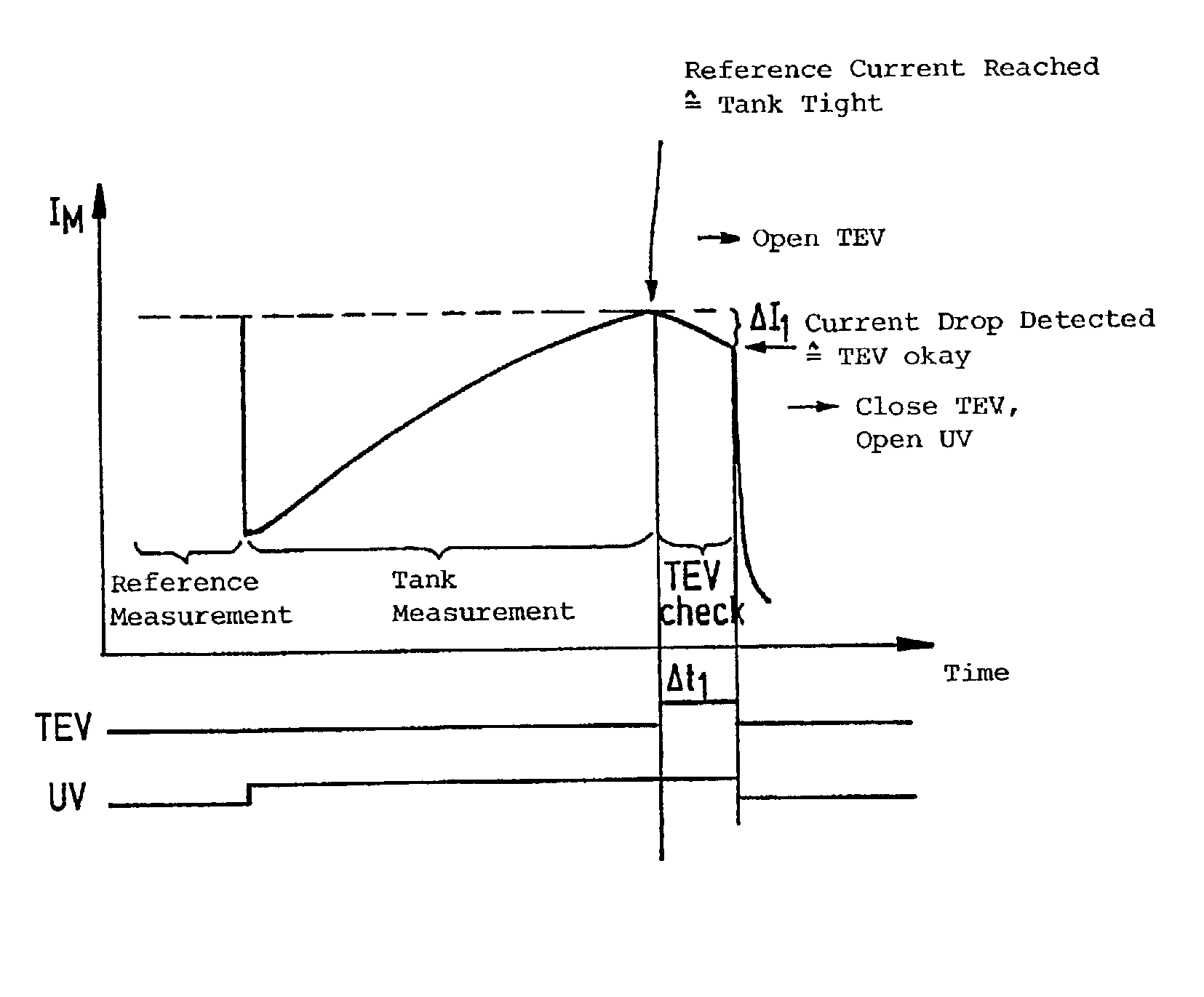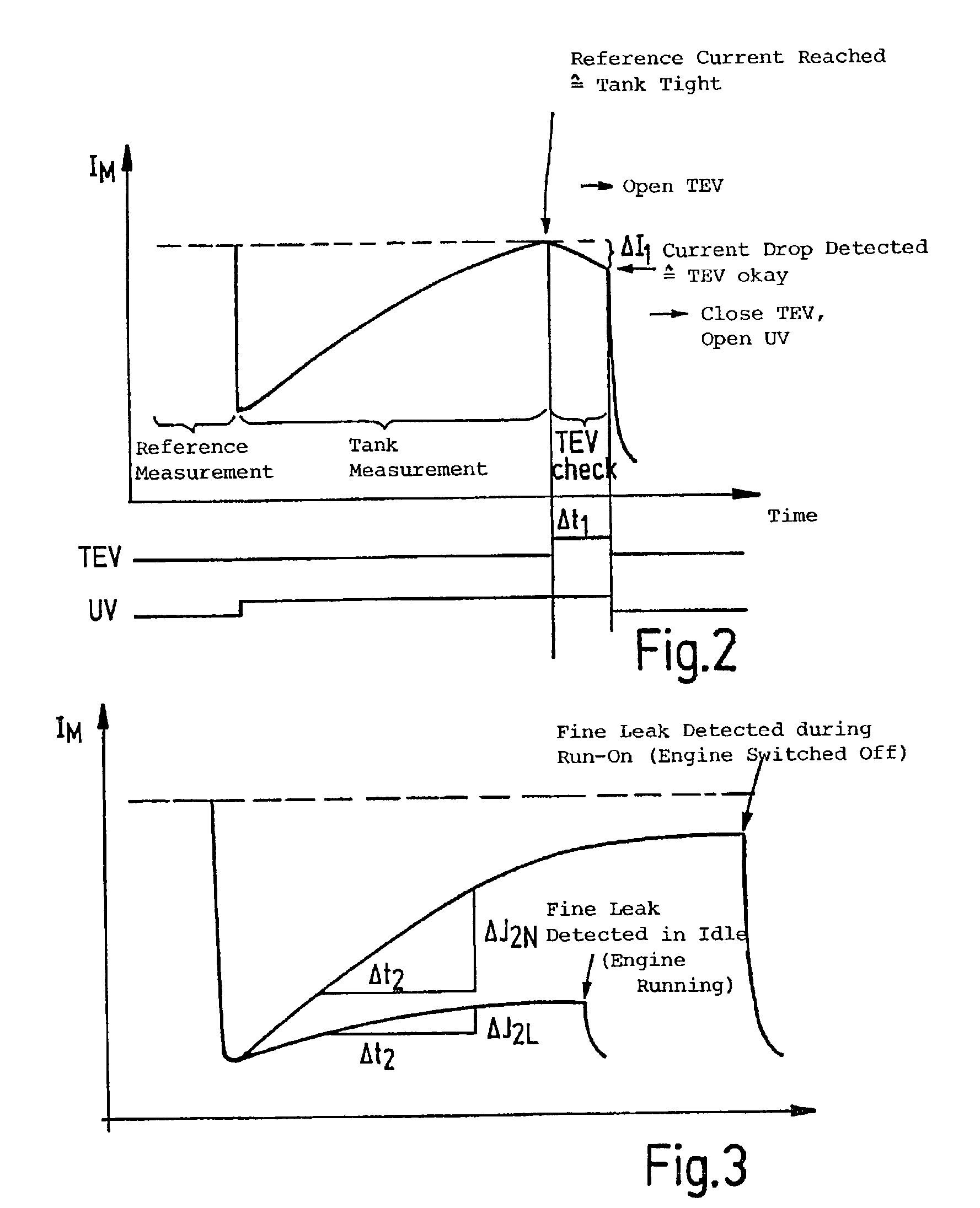Method for conducting a leak test of a tank ventilation system of a vehicle
a technology for venting systems and tanks, applied in fluid tightness measurement, machines/engines, instruments, etc., can solve problems such as untight tank systems, additional circuit complexity, electrical lines, etc., and achieve the effect of reducing the cost of inspection, not only requiring technical complexity, but also a disadvantageous cos
- Summary
- Abstract
- Description
- Claims
- Application Information
AI Technical Summary
Benefits of technology
Problems solved by technology
Method used
Image
Examples
Embodiment Construction
[0019] A tank-venting system of a motor vehicle, which is known from the state of the art, is shown in FIG. 1 and includes a tank 10, an adsorption filter 20 as well as a tank-venting valve 30. The adsorption filter 20 is, for example, an active charcoal filter which is connected to the tank 10 via a tank connecting line 12 and has a venting line 22 which can be connected to the ambient. The tank-venting valve 30 is, on the one hand, connected to the adsorption filter 20 via a valve line 24 and, on the other hand, is connected to an intake manifold 40 of an internal combustion engine (not shown) via a valve line 42.
[0020] Hydrocarbons develop in the tank 10 because of vaporization and these hydrocarbons deposit in the adsorption filter 20. For regenerating the adsorption filter 20, the tank-venting valve 30 is opened so that air of the atmosphere is drawn by suction through the adsorption filter 20 because of the underpressure present in the intake manifold 40 whereby the hydrocarbo...
PUM
 Login to View More
Login to View More Abstract
Description
Claims
Application Information
 Login to View More
Login to View More - R&D
- Intellectual Property
- Life Sciences
- Materials
- Tech Scout
- Unparalleled Data Quality
- Higher Quality Content
- 60% Fewer Hallucinations
Browse by: Latest US Patents, China's latest patents, Technical Efficacy Thesaurus, Application Domain, Technology Topic, Popular Technical Reports.
© 2025 PatSnap. All rights reserved.Legal|Privacy policy|Modern Slavery Act Transparency Statement|Sitemap|About US| Contact US: help@patsnap.com



